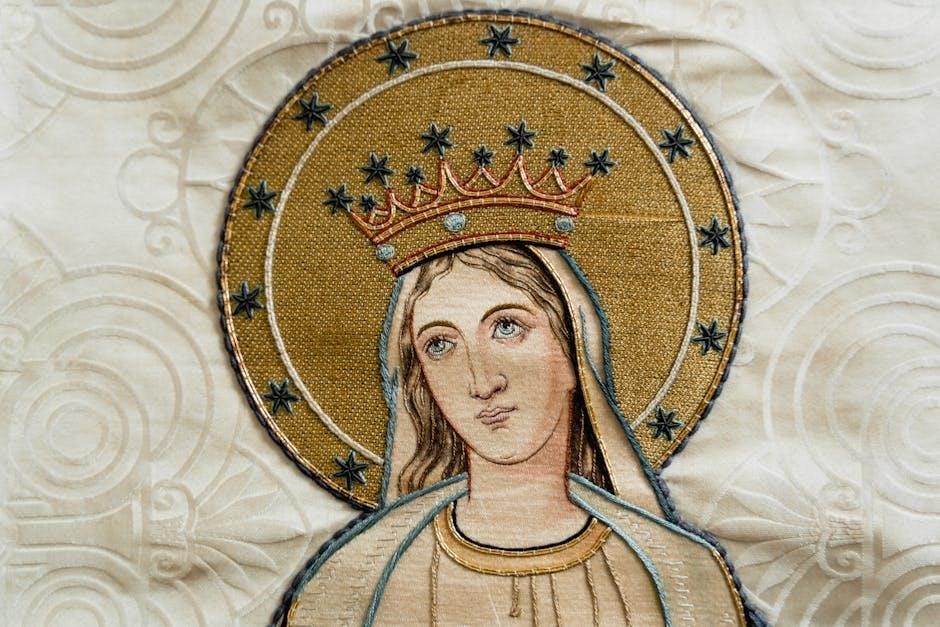Matthew Bible Study Guide: An Overview
Embark on a transformative journey through the Gospel of Matthew! This guide offers insightful questions, detailed study notes, and cross-references;
Explore Jesus’s life, teaching, and divine purpose.
Delve into the key themes, including Jesus as the Messiah and the fulfillment of ancient prophecies. Prepare for a deeper understanding of the Kingdom of Heaven!
This resource is perfect for individual study, family devotionals, or Bible class exploration. Unlock the richness of Matthew and grow in your faith today!
The Gospel of Matthew stands as the first book of the New Testament, presenting Jesus Christ as the long-awaited Messiah and King of the Jews. It’s a carefully constructed narrative, deeply rooted in the Old Testament, demonstrating how Jesus fulfills prophetic expectations.
Unlike the other Gospels, Matthew intentionally frames Jesus within a Jewish context, frequently citing Old Testament scriptures to establish His messianic credentials. The opening genealogy, for instance, meticulously traces Jesus’ lineage back to Abraham, highlighting His rightful claim to the Davidic throne.
This Gospel isn’t merely a historical account; it’s a persuasive argument. Matthew aims to convince a Jewish audience that Jesus is the Messiah, the promised deliverer. He achieves this through a compelling presentation of Jesus’s miracles, teachings, and ultimately, His death and resurrection.
Understanding this initial purpose is crucial for interpreting the entire book. Matthew’s Gospel provides a foundational understanding of Jesus’ identity and His significance for all believers, not just those of Jewish heritage. It’s a powerful invitation to recognize Jesus as Lord and Savior.
Author and Date of Writing
Traditionally, the Gospel of Matthew has been attributed to the apostle Matthew, also known as Levi, a tax collector called by Jesus. Early church fathers, including Irenaeus and Papias, support this authorship, though some modern scholarship proposes a more complex origin.
While the exact author remains a topic of debate, the strong Jewish flavor of the Gospel suggests a writer intimately familiar with Jewish customs, scriptures, and traditions. Regardless of the precise hand that penned it, the Gospel clearly reflects an apostolic perspective.
Determining the precise date of writing is equally challenging. Most scholars estimate a date between AD 70 and 85. The destruction of the Temple in Jerusalem in AD 70 is implicitly referenced, suggesting a writing date after this event.
However, the Gospel’s polished Greek style and reliance on Mark suggest it wasn’t written immediately after the events it describes. A date in the 80s AD allows for sufficient time for oral tradition to develop and for the author to compile and refine the material.
Audience and Purpose
The primary audience of Matthew’s Gospel was likely Jewish Christians, and potentially also a broader Jewish population. The author meticulously demonstrates how Jesus fulfills Old Testament prophecies, aiming to convince Jewish readers that Jesus is the promised Messiah.
Matthew presents Jesus not merely as a teacher or prophet, but as the rightful King of the Jews, the heir to David’s throne, and the culmination of Israel’s history. The extensive genealogies and frequent citations of the Hebrew Scriptures underscore this emphasis.
However, the Gospel also subtly addresses a Gentile audience, explaining Jewish customs and interpreting prophecies in a way that would be accessible to non-Jewish readers.
The overarching purpose of Matthew is to establish Jesus’s messianic identity and to demonstrate the continuity between the Old and New Covenants. It’s a compelling argument for faith, urging readers to accept Jesus as Lord and to live according to his teachings, entering the Kingdom of Heaven.

Key Themes in Matthew

Explore central themes like Jesus as the Messiah, fulfilling prophecies, and establishing the Kingdom of Heaven. Discover how Matthew connects the Old and New Testaments!
Understand Jesus’s authority, divine teaching, and the call to discipleship. These themes reveal God’s redemptive plan for all humanity!
Jesus as the Messiah
Matthew’s Gospel powerfully presents Jesus as the long-awaited Messiah, the fulfillment of Old Testament prophecies. He meticulously traces Jesus’s lineage back to Abraham and David, establishing His rightful claim to the throne. This isn’t merely a historical connection; it’s a theological statement affirming Jesus’s kingly authority.

Throughout Matthew, Jesus consistently demonstrates Messianic credentials through His miracles, teaching, and authority over illness and demons. He is portrayed as the new Moses, delivering God’s law with unparalleled clarity in the Sermon on the Mount.
Key passages highlight this theme, such as the declaration at the baptism of Jesus (Matthew 3:17) and the recognition by the centurion at the crucifixion (Matthew 27:53). Matthew emphasizes that Jesus isn’t just *a* Messiah, but *the* Messiah, the promised one who will redeem Israel and establish God’s eternal kingdom. Studying this aspect reveals the core of Matthew’s message: Jesus is the divine Son of God, sent to save humanity.
Consider how Matthew uses Old Testament allusions to demonstrate Jesus’s Messianic identity. Reflect on the implications of Jesus being both the Son of David and the Son of God.
Fulfillment of Prophecy
A defining characteristic of Matthew’s Gospel is its consistent demonstration of how Jesus fulfills Old Testament prophecies. Matthew doesn’t simply present Jesus as a teacher or miracle worker; he establishes Him as the culmination of God’s redemptive plan, foretold throughout the Hebrew Scriptures;
The Gospel is peppered with phrases like “that it might be fulfilled which was spoken by the prophet,” directly linking Jesus’s life and ministry to specific prophecies. These aren’t coincidences, but deliberate acts of God demonstrating His faithfulness and control over history. Prophecies concerning the Messiah’s birth, life, death, and resurrection are meticulously shown to be realized in Jesus.
Consider the prophecies related to Jesus’s birthplace (Bethlehem – Micah 5:2), His humble beginnings, and the manner of His death. Recognizing these fulfillments deepens our understanding of God’s sovereignty and the intentionality of His plan. Studying these connections reveals a cohesive narrative, demonstrating that Jesus is not an isolated figure, but the central figure in God’s grand story of redemption.
Explore how understanding these prophecies enhances your appreciation for the Gospel’s message and strengthens your faith.
The Kingdom of Heaven
A central and recurring theme in Matthew’s Gospel is the “Kingdom of Heaven,” a concept that profoundly shapes Jesus’s teachings and ministry. Unlike earthly kingdoms built on power and dominion, the Kingdom of Heaven is a spiritual reality, characterized by righteousness, peace, and joy in the Holy Spirit.
Matthew frequently uses parables – stories with hidden meanings – to illustrate the nature of this Kingdom. These parables, like those of the mustard seed, the leaven, and the hidden treasure, reveal that the Kingdom starts small, grows organically, and is of immense value. It’s not a physical place, but a state of being, a reign of God in the hearts of believers.
Entering the Kingdom requires a transformation of heart, a repentance from sin, and a commitment to following Jesus. It’s not about religious observance, but about a genuine relationship with God. Understanding the Kingdom of Heaven challenges us to live differently, prioritizing spiritual values over material possessions and seeking God’s will in all aspects of life.
Explore how this concept impacts your understanding of Jesus’s mission and your role as a follower.

Detailed Study Sections

Dive deep into specific passages! We’ll explore Jesus’s birth (Matthew 1-2), baptism & temptation (3-4), and the Sermon on the Mount (5-7).
Uncover miracles (8-9), the apostles’ commissioning (10), and insightful parables (13) – enriching your Bible study experience!
Matthew 1-2: The Birth and Early Life of Jesus
These chapters lay the foundational groundwork for understanding Jesus’s identity and purpose. Matthew meticulously traces Jesus’s genealogy, connecting Him to both Abraham and David, fulfilling Old Testament prophecies. Consider why Matthew emphasizes this lineage – how does it establish Jesus’s legitimacy as the Messiah?
The narrative then shifts to the miraculous birth of Jesus, highlighting the role of the Holy Spirit and Joseph’s righteous response. Explore the significance of the name “Immanuel,” meaning “God with us.” The visit of the Magi, guided by a star, demonstrates the recognition of Jesus’s kingship by the Gentile world.
However, this joyous occasion is shadowed by Herod’s wicked plot to eliminate the infant Jesus. Reflect on the themes of divine protection and the opposition to Jesus from the very beginning. The flight to Egypt and subsequent return underscore God’s sovereign control over events. What lessons can we draw from these early chapters regarding faith, obedience, and God’s unwavering plan?
Study questions to ponder: How does the genealogy in Matthew 1:2-10 enrich our understanding of Jesus? Why does Matthew call Jesus, Son of David, Son of Abraham?
Matthew 3-4: The Baptism and Temptation of Jesus
These chapters mark a pivotal transition in Jesus’s ministry, from relative obscurity to public proclamation. John the Baptist’s ministry of repentance and baptism prepares the way for the Messiah, recognizing Jesus as the “Lamb of God;” Analyze the symbolism of baptism – what does it represent in the context of Jesus’s identity and mission?

Jesus’s baptism is accompanied by a dramatic heavenly affirmation – the opening of the heavens, the descent of the Spirit, and the Father’s voice declaring Jesus as His beloved Son. Consider the significance of this Trinitarian event. Immediately following, Jesus is led by the Spirit into the wilderness for a forty-day fast and temptation.
Explore the nature of Jesus’s temptations – how do they mirror the temptations faced by Israel in the wilderness? Each temptation challenges Jesus’s identity as the Son of God and His commitment to God’s will. Reflect on Jesus’s responses, rooted in Scripture, and the power of God’s Word to overcome evil.
Study questions to consider: How does Matthew claim Jesus is the promised greater-than-Moses figure? What does Jesus’s obedience in the wilderness reveal about His character and mission?
Matthew 5-7: The Sermon on the Mount
The Sermon on the Mount (Matthew 5-7) is arguably the most famous collection of Jesus’s teachings, presenting a radical ethic for His followers. It begins with the Beatitudes, declarations of blessing upon those who exhibit qualities often considered weak or undesirable by the world. Analyze how these qualities reflect the values of the Kingdom of Heaven.
Jesus then expands on the Law, not to abolish it, but to fulfill it, revealing its deeper meaning and demanding a righteousness that exceeds that of the scribes and Pharisees. Consider the implications of Jesus’s teachings on anger, adultery, oaths, and retaliation – how do they challenge conventional notions of morality?

Explore Jesus’s teachings on giving, prayer, fasting, and storing up treasures in heaven. He emphasizes the importance of sincerity and a proper motive in religious practice. The Sermon culminates in the Golden Rule and a warning against judging others. Reflect on the practical application of these principles in your own life.
Study questions to consider: How does the Sermon on the Mount present a new standard of righteousness? What does Jesus mean by “fulfilling the law?”
Matthew 8-9: Miracles and Authority
Chapters 8 and 9 of Matthew showcase Jesus’s divine authority demonstrated through a series of powerful miracles. These aren’t simply displays of power, but reveal Jesus’s compassion and His authority over disease, nature, and even death. Examine the leper healed, the centurion’s servant restored, and Peter’s mother-in-law cured – what do these miracles reveal about Jesus’s character?
Jesus calms the storm, demonstrating control over creation itself, and casts out demons, signifying victory over the forces of evil; Consider the significance of these acts in the context of the Jewish understanding of God’s power and sovereignty. The healing of the paralytic, coupled with Jesus’s declaration of forgiveness, highlights His authority to forgive sins.
Analyze the controversy surrounding Jesus’s claim to forgive sins. Why did the scribes accuse Him of blasphemy? The calling of Matthew, a tax collector, further demonstrates Jesus’s willingness to associate with the marginalized. Reflect on how these miracles and encounters establish Jesus as the Messiah.
Study questions to consider: How do the miracles in these chapters demonstrate Jesus’s authority? What is the significance of Jesus forgiving sins?
Matthew 10: Commissioning the Twelve Apostles

Matthew 10 details Jesus’s commissioning of the twelve apostles, a pivotal moment in the Gospel narrative. He grants them authority to perform miracles, cast out demons, and preach the good news of the Kingdom of Heaven. Consider the scope of this authority – what does it signify about Jesus’s trust in His disciples and their role in His ministry?
Jesus provides specific instructions for their mission, emphasizing humility, reliance on God’s provision, and a message focused on the nearby towns of Israel. He warns them of persecution, rejection, and even betrayal. Analyze the significance of these warnings – what do they reveal about the challenges facing early followers of Jesus?
Explore the themes of discipleship, sacrifice, and the cost of following Jesus. The passage highlights the importance of unwavering faith and courage in the face of adversity. Jesus emphasizes that those who receive the apostles also receive Him and the Father. Reflect on the profound connection between the disciples and Jesus.
Study questions to consider: What does Jesus’s commissioning of the twelve reveal about His strategy for spreading the Gospel? How do the warnings in this chapter prepare the disciples for their ministry?
Matthew 13: Parables of the Kingdom
Matthew 13 is renowned for its collection of parables, offering profound insights into the nature of the Kingdom of Heaven. These stories, such as the Sower, the Wheat and the Tares, the Mustard Seed, and the Hidden Treasure, utilize relatable imagery to convey spiritual truths. Consider why Jesus chose to teach using parables – what effect did this method have on His audience?
Each parable reveals different aspects of the Kingdom, including its growth, its value, and the challenges it faces. The parable of the Sower, for example, illustrates how different hearts respond to the Word of God. Analyze the symbolism within each parable – what do the seeds, the soil, the wheat, and the tares represent?
Explore the themes of reception, discernment, and the ultimate triumph of God’s Kingdom. Jesus explains that the parables are designed to reveal truth to those who seek it, while concealing it from those who are indifferent. Reflect on the responsibility we have to cultivate receptive hearts.
Study questions to consider: How do these parables challenge our understanding of the Kingdom of Heaven? What lessons can we learn from the different responses to the Word of God depicted in the parables?

Resources for Further Study
Enhance your Matthew study with insightful questions and cross-references! Explore additional reading materials for a deeper understanding. Unlock free lessons and inductive Bible study guides today!
Dive into workbooks designed for personal or group exploration. Discover resources to enrich your faith and grow closer to God’s Word.
Bible Study Questions on Matthew
Engage deeply with the Gospel of Matthew through thoughtful reflection and these probing questions. Begin by considering the genealogy in Matthew 1:1-10: How does it connect the Old and New Testaments, and what significance lies within the three sets of fourteen generations?
Explore Jesus’s identity: Why does Matthew specifically identify Jesus as both Son of David and Son of Abraham? How does this lineage establish His Messianic credentials? Reflect on the implications of Jesus being the promised greater-than-Moses figure, destined to deliver Israel.
As you study, pray for wisdom and understanding, approaching the text with an open heart. Carefully read each chapter before attempting to answer the questions. Consider the broader context and how each passage contributes to the overarching themes of the Gospel. What new insights do you gain about Jesus’s authority and teachings?
Furthermore, contemplate the purpose of Matthew’s writing – to whom was he writing, and what message was he hoping to convey? How does this understanding shape your interpretation of the text?
Cross-References and Additional Reading
Enhance your study of Matthew with these valuable cross-references and supplementary resources. Explore parallels in the other Gospels – Mark, Luke, and John – to gain a more comprehensive understanding of Jesus’s life and ministry. Consider passages in the Old Testament that foreshadow events in Matthew, illuminating the fulfillment of prophecy.
For deeper theological insight, consult commentaries by respected biblical scholars. Resources like the Matthew Henry Commentary or the Expositor’s Bible Commentary offer detailed explanations and historical context. Explore online Bible study tools and websites for additional perspectives.
Delve into related topics such as the Sermon on the Mount (Matthew 5-7) by studying relevant passages in Romans and James, which expand on Jesus’s ethical teachings. Investigate the concept of the Kingdom of Heaven through resources on biblical eschatology.
Remember, consistent reading and reflection are key to unlocking the treasures of Scripture. Utilize these resources to deepen your faith and grow in your understanding of God’s Word.
